Boom. MaRo’s latest article, Metamorphosis 2.0 went up yesterday and completely changed the game. You should absolutely read it, but here’s the short version:
- No more small sets. All sets going forward will be large.
- Consecutive large sets will sometimes be on the same plane.
- Fewer masterpieces going forward.
- Less of the Gatewatch going forward.
- There will be a summer core set. It will be focused towards less experienced players.
- Behind the scenes changes.
Let’s go over these one by one.
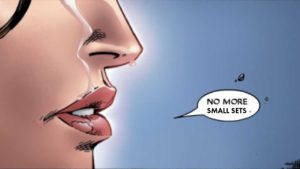
1. No more small sets.
The Change
Small sets are going away completely. We will have three large set releases at their usual time, while the summer set will return to be be a core set (though with a different design philosophy, which we’ll get to later).
The Pros
This change is fantastic. Smaller set Limited formats tend to get stale faster than large formats (there’s a smaller card pool) and are harder to design. They always struggled to find the right balance between innovation and continuity. I always assumed that small sets were a necessary evil, since they’re easier on design and development, but clearly R&D feels up to the task of producing three large sets a year (which technically, they used to do rather frequently, in years like original Zendikar, original Innistrad, and Tarkir). This change is going to make Limited substantially more satisfying and reduce the number of lame-duck formats.
The Cons
This change likely puts a much heavier workload on all of R&D. Creative doubled their workload when the two block paradigm began, now they need to develop three worlds a year. Design and Development will need to craft three completely different Limited formats that have zero interaction with or design relation to each other. Design space may be mined more frequently, and this was already a concern of the two block paradigm.
This change will likely increase the frequency of similar themes. Every five or six blocks, we tend to see at least one multicolored-focused block, one graveyard focused block, and one permanent-type focused block. When there’s only one block a year, this makes for a large period for theme fatigue to end and excitement to build up for its return. When there are as many as three blocks a year, we may expect this cycle to happen every two years or so, which could paradoxically make sets feel both more disjointed (because every three months brings a completely new environment) as well as make them feel same-y (because familiar themes will cycle back much more often).
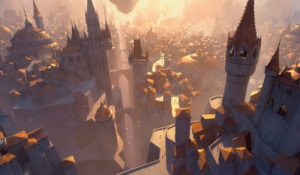
2. Consecutive large sets will sometimes be on the same plane.
The Change
Sometimes, we’ll have two (or conceivably more) large sets in a row on the same world (but with massive mechanical changes). Other times, a world will only get one set before the story moves elsewhere.
The Pros
This is another fantastic change. This solves two major challenges with the two-block paradigm (and the old three-set-block paradigm). First, it makes it easier to visit worlds which have narrower design space. Triple color worlds like Alara and old Tarkir have really limited design space, so this change allows us to see more of them. This could also allow us to see more experimental worlds—Zendikar and Innistrad are the two most famous examples of R&D not having total confidence in their product, and so they replaced the third set of each with a mechanically and thematically distinct large set.
Secondly, this allows R&D to visit worlds which demand more focus. Ravnica just doesn’t work as well under the two block paradigm—it’s difficult to fit all ten guilds into one set, but shifting some of the guilds into a small set necessarily diminishes the amount of cards they can have and their impact on Limited. Under this new system, we can have anoher Return to Ravnica/Gatecrash series of drafts, where all ten guilds will be in Standard without coexisting in Limited. This change allows makes it easier to visit Dominaria, a plane lacking one distinct identity. We can have a set that focuses on one or a few aspects of the plane, then jump to another part for the following set.
The Cons
If a set has a parasitic theme unlikely to be seen in another set (like energy, morph, or Eldrazi) and this theme is intended for Constructed, then R&D has to put the entire deck into a single set. This is really dangerous for Standard, since the entire deck can ignore most or all of what came before or comes after. With R&D’s increased willingness to reprint mechanics on single cards (as seen on Tireless Tracker and Gearseeker Serpent), this could be circumvented, but it’s worth noting.
Returning to worlds but fundamentally changing them could lead Wizards to shift away from what players love about those worlds (as seen in Avacyn Restored, Dragons of Tarkir, and Battle for Zendikar). I believe that Wizards has learned its lesson in this regard, but the new paradigm could lead to more worlds being fundamentally changed because of design necessity.
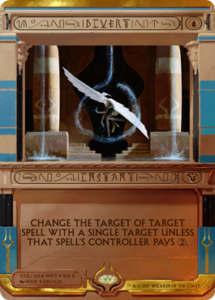
3. Fewer masterpieces going forward.
The Change
Masterpieces are no longer going to be in every set. They will return, but will not be in Ixalan.
The Pros
This is a mixed change. Overall, I like it—Masterpieces have demonstrated what Wizards has been saying about full art lands (if you do them all the time, people stop caring). The Zendikar Expeditions were exciting, valuable, and got me cracking prize cracks when I would otherwise be saving them for team drafting. This behavior completely stopped with Aether Revolt. Masterpieces just became something I was annoyed to see in tournaments.
The Cons
Masterpieces have performed a valuable role—curtailing the price of Standard. The price of booster boxes is fixed at ~$85. If their contents are worth more than that, people just buy boxes at wholesale prices, crack them, and sell their contents for profit. This depresses prices until they reach equilibrium. If $10-$20 of a box’s value come from Masterpieces, then the Standard cards within are worth less money, making Standard cheaper to play. This change is likely to increase the price of Standard, which is not a good thing.
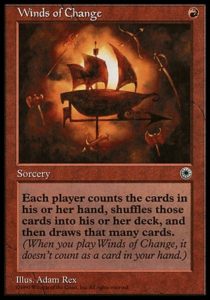
4. Less of the Gatewatch going forward.
The Change
The Gatewatch will be appearing on fewer Planeswalker cards and not all members will always be in Standard. There will also be less of a focus on making story moments tournaments powerhouses.
The Pros
Having the entire Gatewatch in every storyline takes away room for us to meet the denizens of the plane (or meeting them takes away room from other parts of the set). They also take up several mythic rare slots every block, and have lately always been pushed for Constructed (which prevents newer things from having focus). There are also a lot of each Gatewatch member, and the eighth Jace or ninth Chandra are just less likely to excite players than the first or second edition of another character (much like how always having Masterpieces negated their excitement value).
The Cons
The Gatewatch storyline has lead to the highest story engagement ever. Focusing less on the Gatewatch could lead to less engaging storylines. Magic will need to find a happy medium between its story and card design needs, given that the Gatewatch storyline is the most successful story in Magic’s history. I believe that we’ve already seen some of this with cards like Hedron Archive—it obliquely features Jace, who isn’t in the set and has little to do with the card (it’s not even blue). This allows him to be present in the story without being heavily featured in it or the cards.
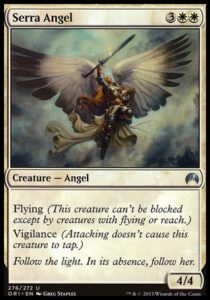
5. There will be a summer core set.
The Change
We’re getting the core set back, but it’s going to be more focused towards newer players than ever before.
The Pros
This is a massive and necessary change. The core set, while the least exciting set, performed three necessary functions:
First, it allows much-needed reprints. A theme-agnostic plane allows reprints that would make no sense on most worlds, such as Narcomboeba (which is from Iquatana, a plane we’ve never visited), Elspeth Tirel (who is dead, but likely to come back to life at some point), or Merrow Reejery (which requires heavy merfolk tribal support and a Celtic theme). A core set also allows high power level reprints like Lightning Bolt which would otherwise steal focus and power level from new cards (which most expansions need in order to be exciting and drive sales).
Secondly, it gives newer players a dedicated product to start the game playing. The biggest threat to Magic’s health is its high learning curve. It has tried many products to help new players go from knowing nothing to drafting expert expansions and playing Standard. Planeswalker Decks and Magic Duels have been very successful, but the core set was the best set for new players learn Sealed and build simpler decks with. Bringing it back ought to be a great boon.
Thirdly, it gives experienced players an opportunity to have a break.
We’ve decided to err on the side of new players. Note this doesn’t mean there won’t be some goodies for the enfranchised player… just that whenever we got to a fork in the road, we picked the path of making this product the best introductory booster release possible.
…This means, for example, that we will have a Draft environment that can be mastered more quickly than normal (meaning it should be fun for enfranchised players but not for as many drafts as usual).
The biggest reason I missed core sets is that they gave me a chance to take a break from Magic. They were simpler, so it took far fewer drafts to get bored than normal. I’d spend the summer playing less Magic, so by the time of the Fall prerelease, I was refreshed and excited to play (and had saved up some money for the next nine months of heavy Magic play). I consider last summer’s product release schedule to have been disastrous—having a plethora of products when I was accustomed to having none sapped my enthusiasm. When Magic gave me a designated time to take a break, it didn’t feel like quitting the game, but when I have to make that determination myself, I feel like I have to make the choice to actually quit (which I don’t want to do, but man, do I need a break from time to time).
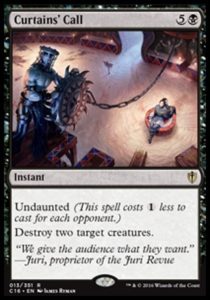
6. Behind the scenes changes.
The brand new team, Play Design, is an interesting new development that we’re about to start hearing concrete details about. Details are still somewhat scant, but there was one intriguing tidbit in MaRo’s article:
We’re also looking externally for additional people to join the team.
Now seems like a better time than most to try and get a job at Wizards of the Coast. If you’re like me and have been hoping to get a foot in the door, now’s the time.
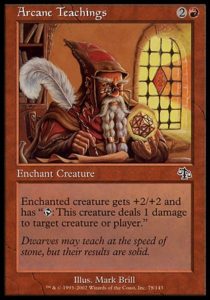
Phew! That was a whole lot to take in. By the time this Drawing Live goes live, we’ll be in day two of Announcement Week, just before the banned and restricted changes go up. There’ll be a whole lot more to discuss this week, so stay tuned—we at Hipsters will be covering everything as it happens.
And, as always, thanks for reading.
—Zachary Barash
Zachary Barash is a New York City-based game designer. He learned Magic in 1994 and is still afraid of Living Wall (don’t click it! It’ll see you!). He just received his MFA in Game Design at NYU and designs for Kingdom Death: Monster.
His favorite card of the month is Supernatural Stamina. It’s a one-mana combat trick that doesn’t actually save a creature from dying… except it does, blinks it, and kind of exerts it. It manages to tell a whole lot of story and be a powerful, flexible combat trick for only one mana.

